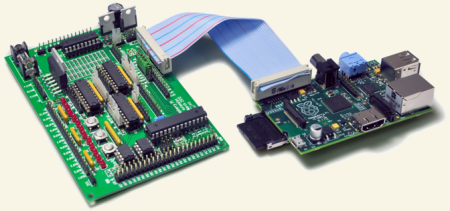
Now instead of wrangling Python or PHP to do your bidding, [Eric] came up with a way to control the GPIO pins on his Raspberry Pi in a browser.
[Eric] calls his project WebIOPi, and it’s the perfect tool if you’d just like to blink a LED or control a relay over the internet. Simply by pointing his browser to the IP of his Raspi, [Eric] can turn GPIO pins on and off, directly from his desktop browser.
All the code for WebIOPi is available on [Eric]’s Google code page. The UI of [Eric]’s project is fully customizable, so it’s entirely possible to control your garage door from a smart phone simply by loading up a web page hosted on your Raspi and pressing a button.
Right now WebIOPi is only able to turn GPIO pins on and off. That will change as [Eric] implements UART, SPI, and I2C in his project, making it possible to do a lot of cool stuff without having to write much – if any – code.












